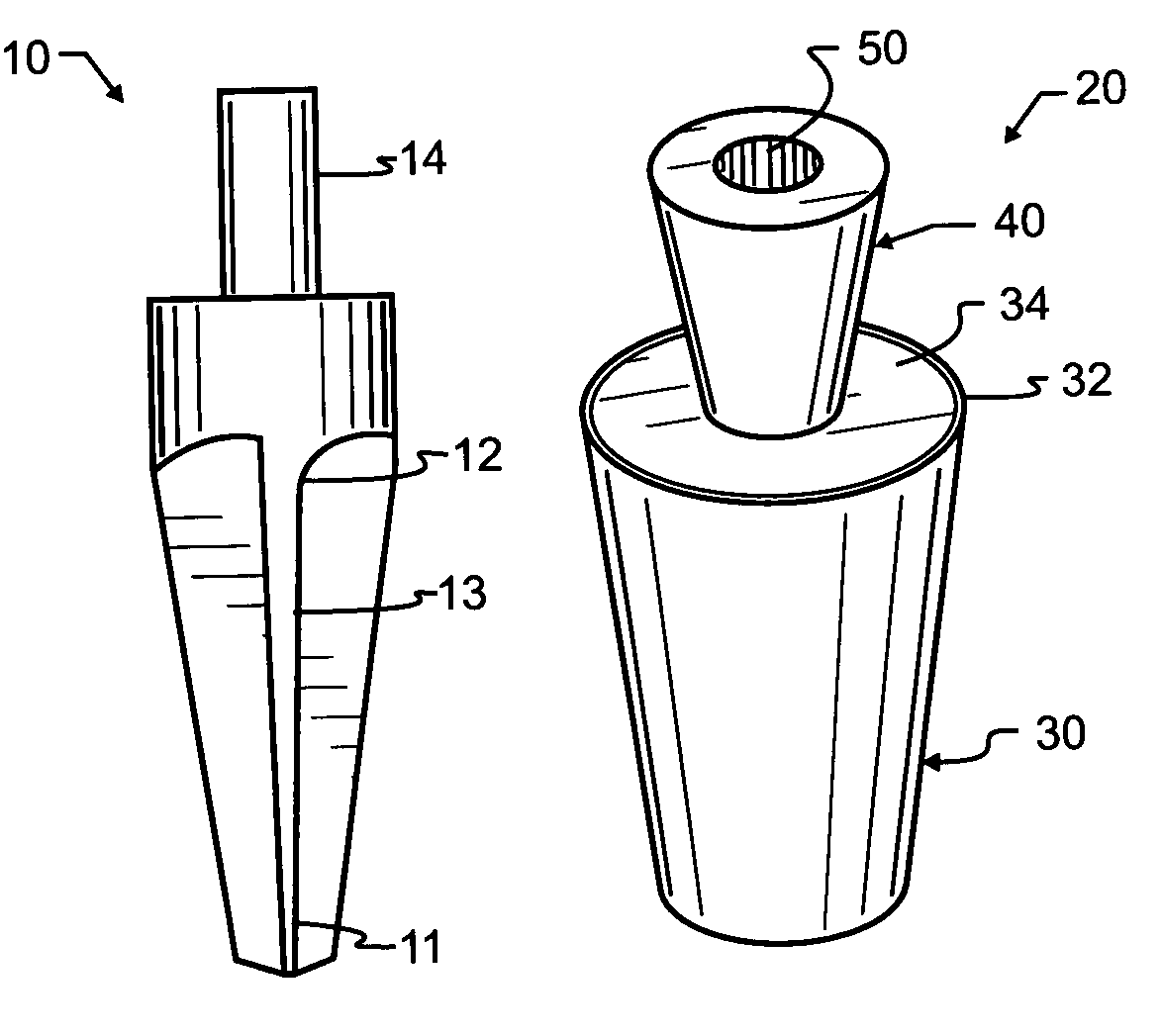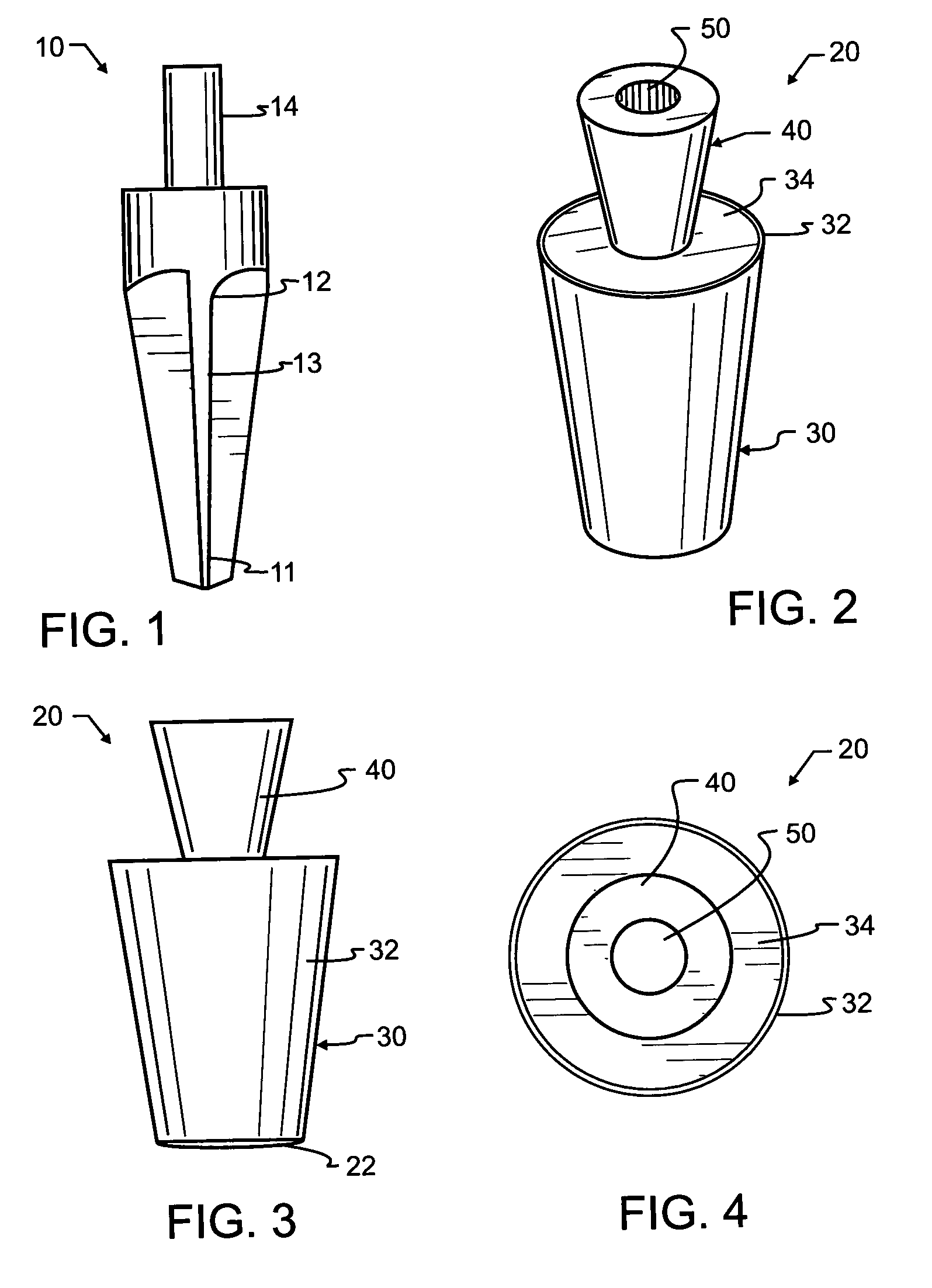Taper-ream wood repair apparatus and method
a wood repair and taper-ream technology, applied in the field of woodworking, can solve the problems of affecting the use of the human body, the inability to repair and replace the door, the inability to adjust the door, etc., and achieve the effect of improving the fastening and repair technique, substantial strength, and eliminating any delay in use or further work
- Summary
- Abstract
- Description
- Claims
- Application Information
AI Technical Summary
Benefits of technology
Problems solved by technology
Method used
Image
Examples
Embodiment Construction
[0024]Manifested in the preferred embodiment, the present invention provides a tapered reaming tool 10, illustrated in FIG. 1, that will preferably be used for opening up, enlarging, or shaping an existing opening in a substrate. Reaming tool 10 may take on other forms or geometries as desired for a particular application, and for shaping an opening in a particular substrate material. In the preferred embodiment, ream 10 may be used to form an expanded hole which is co-axial with the original fastener, to thereby maintain axial alignment of the replacement fastener. The slight angular expansion that occurs from tip 11 to flute end 12 provides a most preferred generally conical opening geometry, the full benefit of which will be explained more fully herein below. In addition, the slightly expanding width of cutting edge 13 from tip 11 to flute end 12 has been determined to reduce and in most cases completely eliminate undesirable bouncing that otherwise occurs within holes during the...
PUM
 Login to View More
Login to View More Abstract
Description
Claims
Application Information
 Login to View More
Login to View More - R&D
- Intellectual Property
- Life Sciences
- Materials
- Tech Scout
- Unparalleled Data Quality
- Higher Quality Content
- 60% Fewer Hallucinations
Browse by: Latest US Patents, China's latest patents, Technical Efficacy Thesaurus, Application Domain, Technology Topic, Popular Technical Reports.
© 2025 PatSnap. All rights reserved.Legal|Privacy policy|Modern Slavery Act Transparency Statement|Sitemap|About US| Contact US: help@patsnap.com


